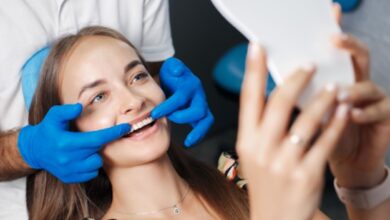All About the Loguytren Problems: Understanding Causes, Symptoms, and Treatments

When it comes to hand health, few conditions are as misunderstood yet increasingly common as Loguytren problems. Affecting the fingers’ ability to move freely, this condition can sneak up gradually, often becoming a concern only when hand function is clearly limited. With more cases being diagnosed worldwide, it’s important to understand what Loguytren problems are, how they affect people, and what treatments are available.
What Are Loguytren Problems?
Loguytren problems refer to a condition that causes the fingers—usually the ring and pinky fingers—to bend toward the palm and resist straightening. Over time, this can become a significant barrier to performing daily tasks such as gripping objects, shaking hands, or typing. Medically known as Dupuytren’s Contracture, it’s a progressive condition that begins under the skin of the palm with thickening of tissue, eventually forming tough cords that pull the fingers inward. Many people seek help only after noticeable restriction, but early signs may appear years before severe symptoms.
Origin and Naming of Loguytren Problems
The name “Loguytren” is often a phonetic variation or misunderstanding of “Dupuytren”, named after the 19th-century French surgeon Baron Guillaume Dupuytren, who first described the condition in medical literature. Dupuytren’s contribution to surgery and anatomy was significant, and his identification of this specific hand deformity brought much-needed attention to what had previously been dismissed as aging or arthritis. Despite the mispronunciation or alternate spelling, Loguytren problems refer to this same condition, highlighting how widespread the issue has become—even in everyday language.
Common Symptoms of Loguytren Problems
The symptoms of Loguytren problems often begin subtly and worsen over time. Early signs include small lumps or nodules under the skin of the palm, usually near the base of the ring or little finger. These nodules may feel firm but are typically painless. As the condition progresses, cords of tissue form under the skin, pulling fingers into a bent position. Eventually, these fingers can no longer fully straighten. Other signs include tightening skin, difficulty gripping objects, and loss of hand flexibility. Since the condition advances slowly, many people don’t realize how much it impacts them until hand function is significantly compromised.
Who Is Most at Risk?
Loguytren problems are most common in men over the age of 40, although women can also be affected. The condition has a strong hereditary link, especially in people of Northern European descent. It is often referred to as the “Viking disease” due to its prevalence in Scandinavian populations. Beyond genetics, lifestyle factors can increase risk—such as heavy alcohol use, smoking, and diabetes. People with seizure disorders or those taking certain medications have also shown higher incidence rates. Those working in manual labor or vibration-heavy industries may notice symptoms sooner due to strain on the hands.
Understanding the Causes Behind Loguytren Problems
While the exact cause of Loguytren problems remains unclear, most researchers agree that a genetic predisposition plays the largest role. The condition is believed to involve the body producing excessive collagen in the fascia of the hand, leading to thickened tissue and cord formation. Environmental and behavioral triggers can accelerate progression. These include:
- Chronic alcohol consumption
- Smoking, which restricts blood flow
- Diabetes, which alters connective tissue
- Occupational stress involving hand strain
Though not caused by injury, some believe that trauma may make underlying problems more noticeable.
How Loguytren Problems Are Diagnosed
Diagnosis of Loguytren problems is usually straightforward and based on physical examination. A doctor will examine your hands for lumps, cords, and finger movement. One common method used is the “tabletop test”, where you try to lay your hand flat on a surface. If your fingers don’t fully touch the table, it may indicate contracture. In rare cases, imaging tests such as ultrasound or MRI may be used if the diagnosis is uncertain or if other hand conditions are suspected. Early diagnosis helps patients manage symptoms more effectively before progression becomes severe.
Stages of the Condition
Loguytren problems develop gradually and can be categorized into stages:
- Early Stage: Nodules form under the skin, sometimes tender at first.
- Intermediate Stage: Cords begin to develop and fingers may slightly bend.
- Advanced Stage: Cords tighten, causing permanent finger contracture.
- Severe Stage: Function is limited, daily activities become difficult or painful.
Progression can vary from slow and non-disruptive to rapid and disabling. Early detection and therapy can slow or halt progression.
Biography: Key Figures Who Studied or Treated Loguytren
The most notable figure in the study of this condition is Baron Guillaume Dupuytren, a French surgeon who was the first to extensively document and treat the condition in the 1800s. His pioneering surgical techniques laid the groundwork for modern treatments. In more recent decades, Dr. Charles Eaton and others in orthopedic and hand surgery have advanced both non-surgical and minimally invasive options. Their research has helped improve outcomes and reduce recovery time for patients dealing with this persistent hand problem.
Available Treatments and Therapies
The treatment options for Loguytren problems vary depending on severity. In mild cases, physical therapy, stretching, and massage can help maintain flexibility. In more advanced cases, treatment may include:
- Collagenase Injections: An enzyme injected into the cords to break them down.
- Needle Aponeurotomy: A minimally invasive procedure using a needle to break cords.
- Fasciectomy Surgery: Removal of the thickened tissue; more invasive but highly effective.
- Splinting or Bracing: Sometimes used post-treatment to prevent recurrence.
Early intervention offers the best chance of reducing impact and restoring function.
Lifestyle Adjustments and Management Tips
While Loguytren problems can’t be completely prevented, certain lifestyle changes can reduce severity or delay onset. These include:
- Avoiding smoking and alcohol
- Managing chronic conditions like diabetes
- Regular hand exercises and stretching
- Using hand tools with ergonomic grips
- Taking breaks during repetitive tasks
Staying informed and proactive is key. Many patients benefit from occupational therapy and adaptive strategies in their daily routines.
Recent Advances in Treating Loguytren Problems
Recent years have brought exciting developments in treating Loguytren problems. Clinical trials are exploring new biologic agents that may prevent collagen buildup altogether. Researchers are also working on gene-targeted therapies to address the root cause. Additionally, improved imaging and robotic-assisted surgeries are making procedures safer and more effective. There’s growing interest in regenerative treatments such as stem cell therapy, though these remain in early testing stages.
Patient Experiences and Testimonials
Many individuals living with Loguytren problems share similar journeys—from initially ignoring mild symptoms to finally seeking treatment after daily life was affected. Some patients have regained full hand function after non-surgical treatments, while others have found relief through surgery. Testimonials often emphasize the importance of early intervention, informed decision-making, and ongoing management. Online forums and support groups offer a valuable space for sharing experiences and advice.
Conclusion
Loguytren problems may sound like a complex condition, but with awareness and timely treatment, many people live full and active lives. Understanding the causes, recognizing symptoms early, and exploring treatment options are the first steps to regaining control. As research continues and therapies improve, there is growing hope for those affected by this hand condition. Whether you’re newly diagnosed or helping a loved one manage the symptoms, remember: knowledge, support, and early care make a significant difference.
Frequently Asked Question
What are loguytren problems?
It refers to a hand condition where fingers bend inward due to tissue thickening.
Can loguytren problems be cured?
While there’s no permanent cure, treatments like injections or surgery can restore function.
Is the condition painful?
Early stages are often painless, but advanced cases can cause discomfort.
What causes loguytren problems?
Genetics play a key role, but factors like alcohol use and diabetes increase risk.
When should I see a doctor?
If you notice finger stiffness or nodules in the palm, it’s best to consult a specialist early.



